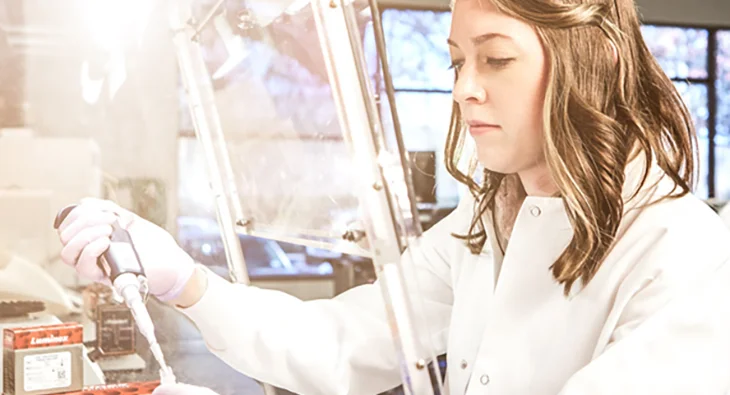METHODS Special Issue: Clinical and Analytical Performance Data for NxTAG® RPP
Highly scalable, multiplex molecular assay is comparable to xTAG® RVP performance
If you’ve ever used an assay based on xTAG® Technology, you may wonder how the newer NxTAG® Chemistry stacks up. A new publication in Methods uses clinical and analytical data from respiratory pathogen panels to demonstrate how both performance and workflow have improved with NxTAG Technology.
The publication, “Multiplexed detection and identification of respiratory pathogens using the NxTAG® Respiratory Pathogen Panel,” was written by Luminex researchers and collaborators at several clinical labs. In addition to performance data, the paper also includes a detailed assay protocol for using the NxTAG® Respiratory Pathogen Panel (RPP).
NxTAG RPP is the latest in a series of multiplex molecular assays developed for the detection of respiratory tract infections. The xTAG® Respiratory Viral Panel (RVP)—which detected as many as 19 common respiratory viruses and subtypes—was “the first multiplexed molecular assay for respiratory pathogens cleared for in vitro diagnostic use,” as the authors note. A subsequent test, the xTAG RVP FAST, was also cleared for in vitro diagnostic use. At the end of 2015, NxTAG RPP was launched based on “the newest generation of universal tag sorting chemistry from Luminex,” the scientists write. “NxTAG RPP incorporates multiplex RT-PCR, with the universal tag system in the form of lyophilized reagents, to provide a closed system for amplification and detection of 20–21 respiratory viral and bacterial targets.” After extraction, all steps occur in a single tube for a streamlined workflow that requires minimal hands-on time.
Results of the Study
Results included in this study came from four clinical sites; more than 2,000 nasopharyngeal swab specimens were collected from children and adults. Over 95% of samples “generated valid NxTAG RPP results for all analytes on the first attempt,” the authors report. “All available residual specimens were re-run with NxTAG RPP, and generated valid results upon re-test.”
Detailed analyses of the assay’s performance demonstrate its reliability. “As presented here, the clinical performance is comparable to that of the original xTAG RVP assay, with sensitivities of >92.9% and specificities of ≥96.3% for most pathogens,” the authors write. Clinical specificity “ranged from 96.3% to 99.9% for the viruses and 99.9% to 100% for the bacterial pathogens.” That means NxTAG RPP has comparable clinical performance to the xTAG RVP assay, and its analytical performance is as good as or better than the xTAG RVP and xTAG RVP FAST assays.
The scientists note that “a particular strength of a multiplex panel, such as NxTAG RPP, is the ability to detect coinfections.” In the study reported, coinfections were identified in almost 18% of samples. “While many of the causative organisms are treated similarly, the ability to accurately detect the organisms present and the most likely pathogen is very important when confronted with several organisms in a sample which are of varying risk to the patient,” they report.
Related Content
- Advances in Bead-Based Biomarker Detection [Methods xMAP Issue]
- View the latest xMAP® Insights Newsletter [Online & Download]
- Browse 1,200+ Partner Kits with xMAP® Kit Finder [Online Tool]
- xMAP® Cookbook to Design Your Own Assays [Download]
- View the xMAP® Webinar Blog Series [Video]
- Getting Started with xMAP® Technology [Video]
- Respiratory Infection Portfolio [Web Page]
For In Vitro Diagnostic Use. Products are region specific and may not be approved in some countries/regions. Please contact Luminex at support@luminexcorp.com to obtain the appropriate product information for your country of residence.


